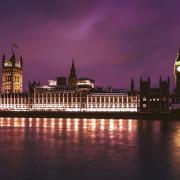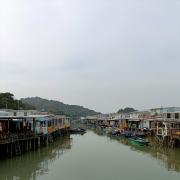
On May 1st, the UK government publicly declared a climate emergency, which despite solidifying the sobering reality of the environmental crisis, nonetheless kindled national hope that the government was finally ready to implement change. Six months on, in light of the Elmbridge Borough council planning report, this statement has proved to be another empty political ploy to distract from the fundamental issue that the government appears to be so irrevocably ignoring.
When the government declared a climate emergency in May, it was widely interpreted as the British commitment to reducing carbon emissions and lessening the effects of global warming. However, following this supposed pledge the Elmbridge Borough Council later proposed a series of local planning options for housing and industrial development, to be introduced over the next 15 years. Only a light inquiry into these plans would reveal the council’s proposition for a series of environmentally damaging changes, with one option suggesting the release of 11% of the local Green Belt to redevelopment. This is clear evidence that the declaration of a climate emergency is hardly a ‘huge step forward’ as Jeremy Corbyn puts it, but rather a backward political manoeuvre to distract from the destructive nature of future development. After all, the proposal does not legally compel parliament to act, so maybe the government are not as invested in environmental conservation as they might otherwise suggest.
Contrary to this, the burden upon Borough Councils to respond to the housing crisis is equally applicable to Elmbridge, as, according to the Elmbridge Local Plan Consultation, the council have been required to develop 623 new houses every year. Until this housing crisis is overcome, one must be forced to accept the correlation between the increasing environmental pollution with the rapid buildout of housing in towns and cities; it is simply unrealistic to expect these two agendas to be harmoniously achieved when they are so utterly incompatible. In the meantime, the government has a duty to ensure that these houses are affordable, as the housing crisis is most prevalent for those of lower to average incomes. Permitting the development of unaffordable housing complexes by profit-orientated developers is almost sacrilege to the land and the community to which it belongs.
Regardless of this, proposing to build 16,300 houses over the next 15 years will not only massively increase the density of Elmbridge Borough towns and villages, but it will also condemn the varied wildlife to an environment of ever increasing pollution. East Molesey is home to the beloved kingfisher, which would undoubtedly be threatened by the urbanisation of 618 hectares of land in Elmbridge. This validates further condemnation of the government’s ‘climate emergency’ as they are actively threatening a symbol of environmental prosperity, which in such times of crisis they should be striving to preserve. Another deeply shocking proposal the council unveiled, was a possible threat to the allotments in East Molesey. This would not only inhibit the amenities for residents, but also conveys a message of disinterest by the council, who by threatening to build on it, appear to be discarding the enrichment of the local environment. With little evidence of any local level implementation of environmental reform, we are left with only shreds of battered hope that the government will introduce meaningful methods for change.
Mary Walters


























